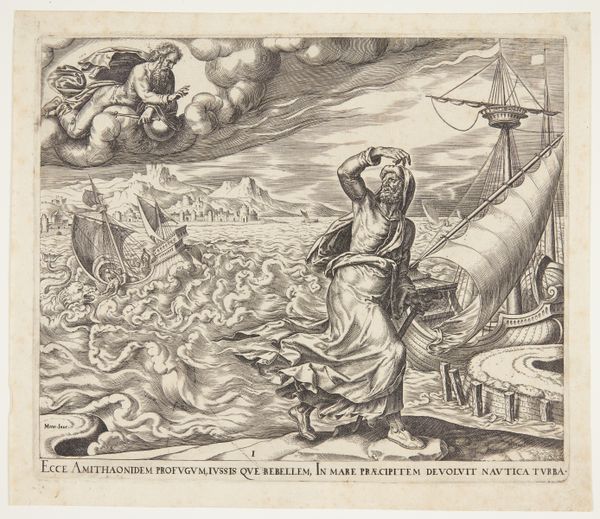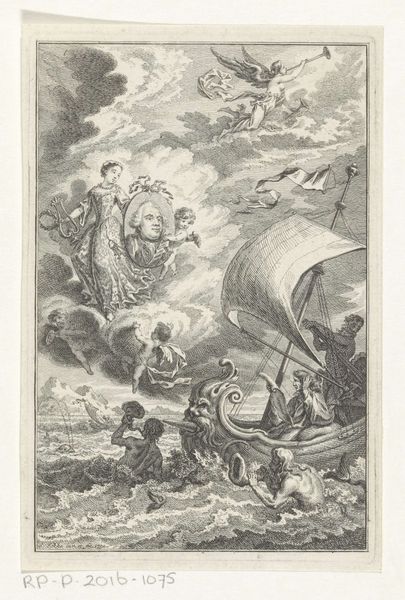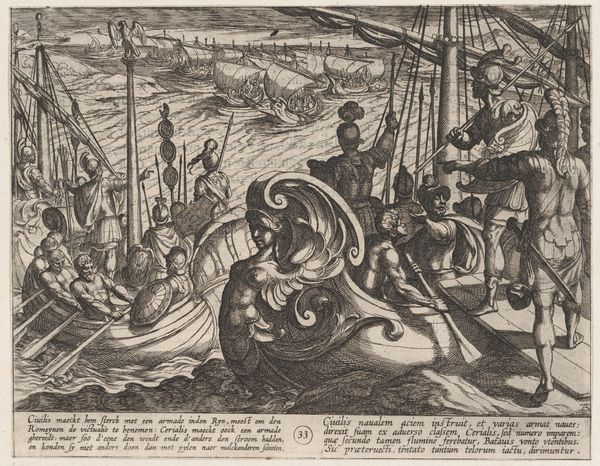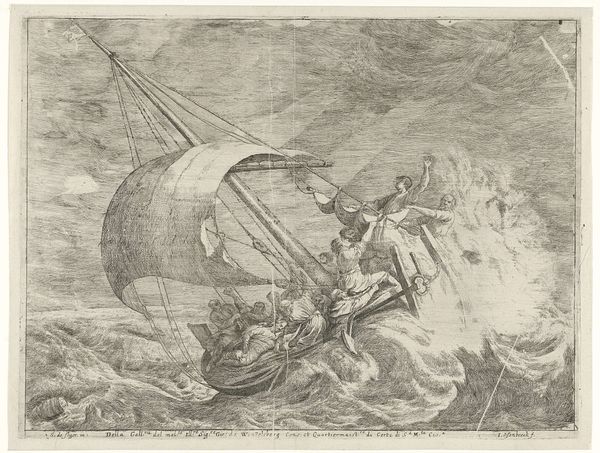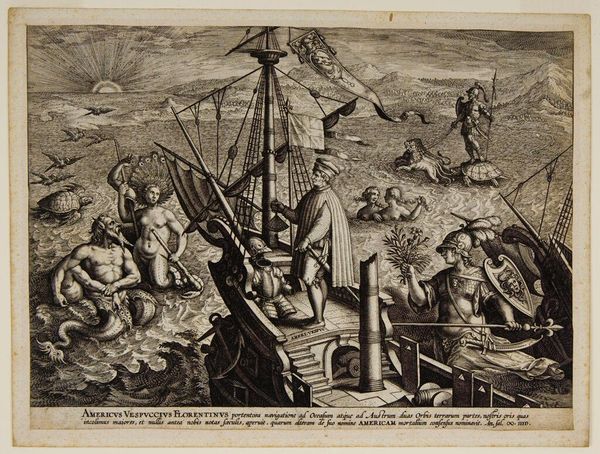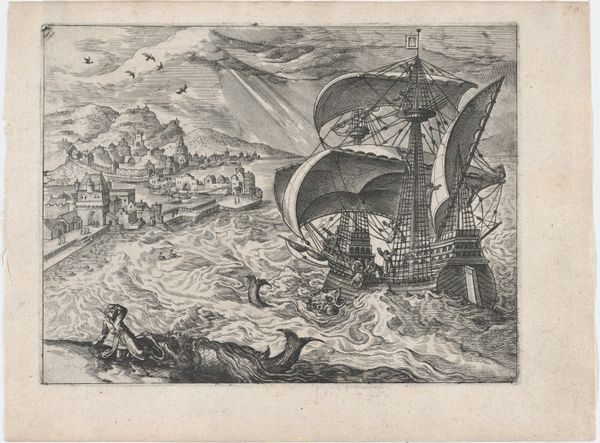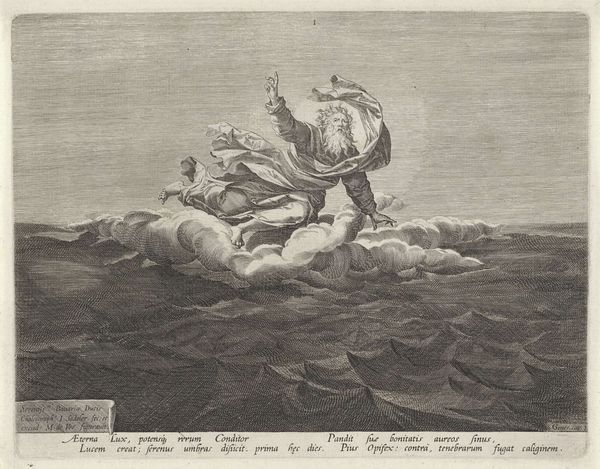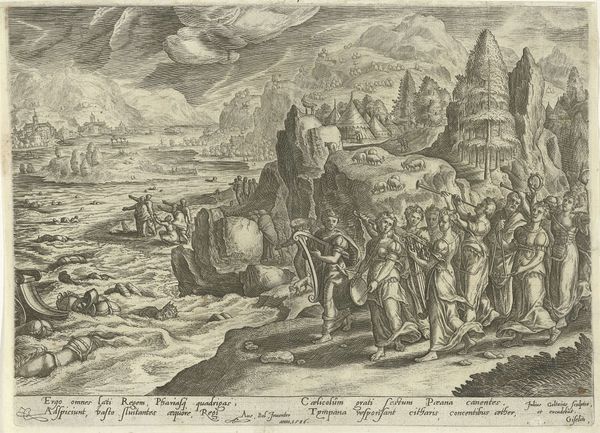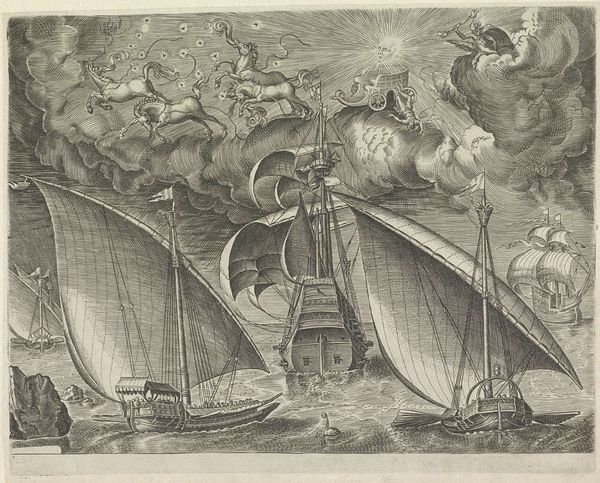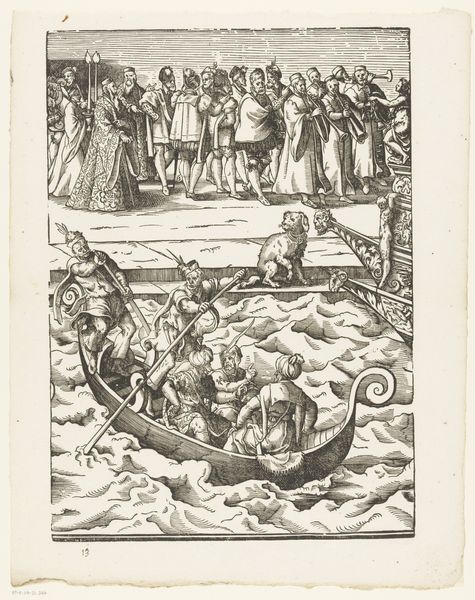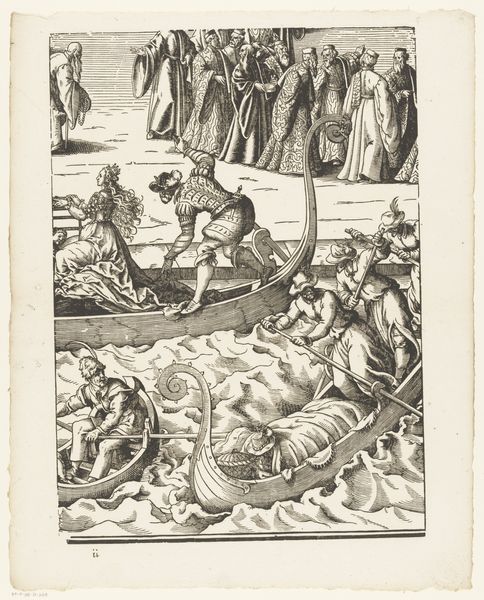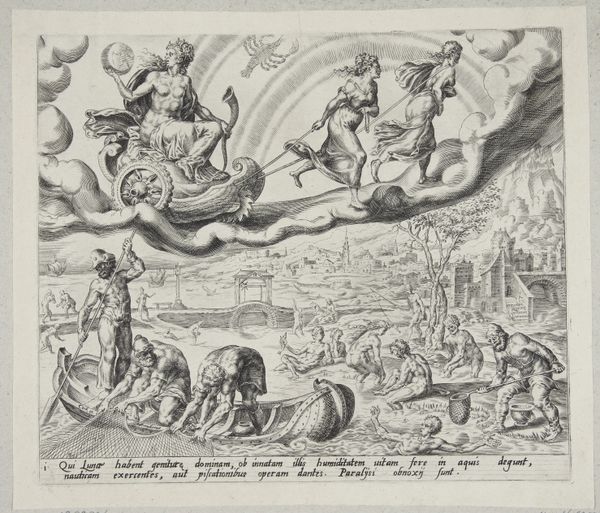
print, engraving
# print
#
landscape
#
figuration
#
11_renaissance
#
history-painting
#
engraving
Dimensions: height 207 mm, width 248 mm
Copyright: Rijks Museum: Open Domain
Curator: This engraving, likely dating between 1596 and 1633, is entitled "God beveelt Jona om naar Nineve te gaan," or "God commands Jonah to go to Nineveh." It is attributed to Philips Galle and housed here at the Rijksmuseum. Editor: The immediate impression is one of swirling chaos. Look at those waves! They practically dwarf the ship. And above, a placid God overseeing the turmoil. The tension is palpable. Curator: Note Galle's masterful use of line and the detailed depiction of fabric and texture, especially within the billowing waves. His technical control and application of Renaissance ideals onto this figuration is evident. How do you interpret the contrast between the meticulous depiction and the subject? Editor: For me, the image reads as a commentary on power dynamics. God, presented almost as a bystander on his cloud, sets off a chain of events, and look at how the material realities—the ship, the water, the bodies—are tossed about by that divine intervention. We see the story’s message embodied through the conditions and labor needed to produce ships, as well as the natural and unpredictable power of ocean trade routes. Curator: That reading aligns well with Galle’s probable intent for wide distribution through print, making this accessible during the religious and social turbulence of the Reformation. Jonah’s story then, is a vehicle—to put it simply. How it would be perceived is key. Editor: Exactly. And what a stark contrast to the polished rendering! This polished execution would be crucial to convincing the patrons buying the piece to align with its view, no? Curator: Possibly—It would at least compel a discussion around their beliefs. A visual rhetoric that's finely rendered has, shall we say, a better argument. But to reiterate, one shouldn't overlook the interplay of textures in Galle’s work, the water’s energy set against the smoothness of the clouds… it’s compelling formally. Editor: I agree—that visual complexity certainly deepens the narrative for the viewer, encouraging the reading from diverse viewpoints during a tumultuous era of faith. Seeing Galle’s commentary reflected across the materials is compelling and well placed. Curator: Thank you. It does broaden the interpretive scope to consider Galle and his historical context through both process and visual language.
Comments
No comments
Be the first to comment and join the conversation on the ultimate creative platform.
